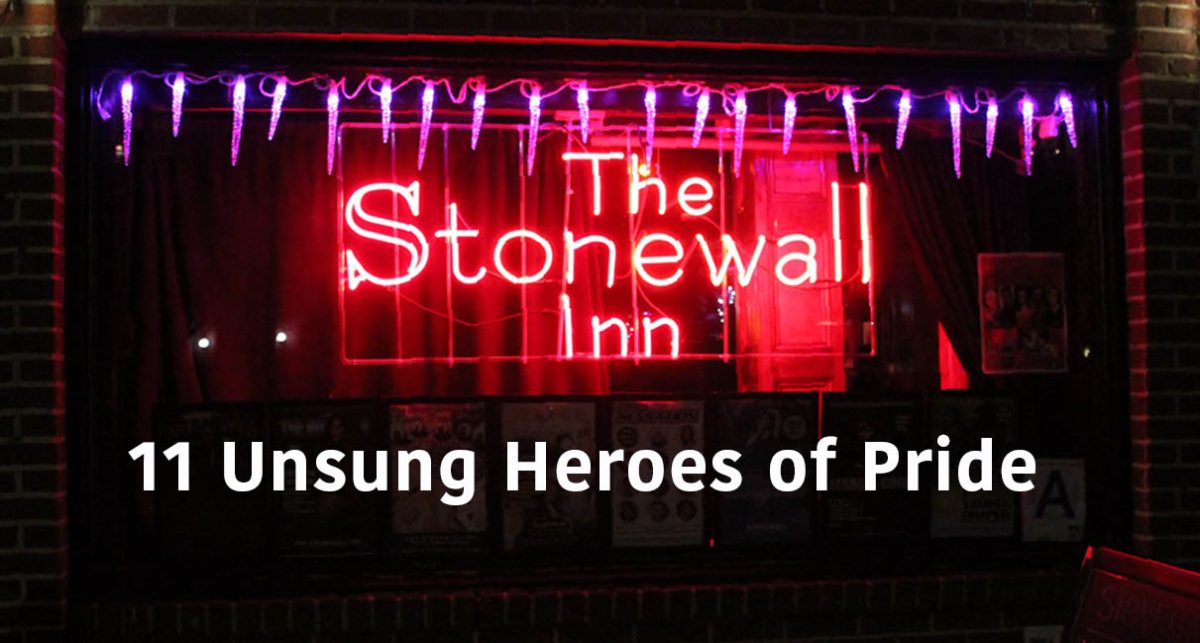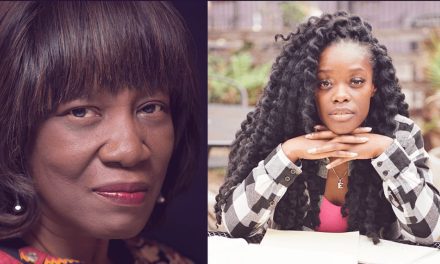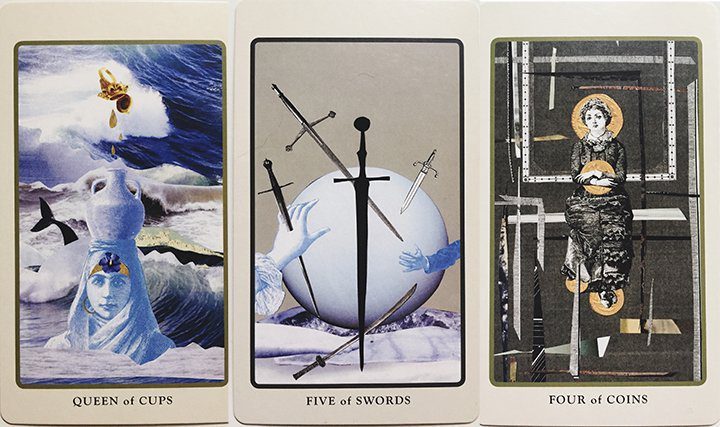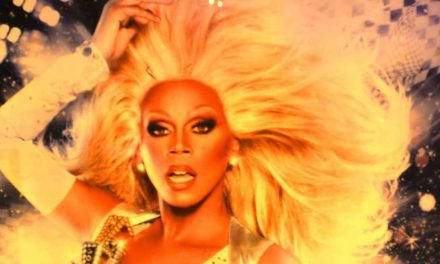At somewhere around 1:30 a.m. in New York City, on June 28, 1969, police launched the surprise raid on the Stonewall Inn that triggered the birth of the organized Pride movement.
Today, join me in honoring “11 Unsung Heroes of Pride,” identities and concepts that are pivotal to this year’s explosion of Pride, perhaps the most widely-celebrated Pride month in decades:
(1) TRANSGENDER PEOPLE
For years now, transgender people have bravely stepped forth to stand up for their basic rights to receive medical care, use restrooms, play sports, go to school, or other things most of us take for granted — even other LGBTQ people. They’ve placed themselves under public scrutiny and taken on all kinds of roles — from board members, to writers, to group leaders, to newspaper “go-to experts,” to elected officials … all while still facing individual and systemic challenges like health care discrimination and prejudice, harassment, and even violence.
Like the PWAs (Persons With AIDS) of the 1980s and ‘90s, who were years ahead in standing up for rights, so are many transgender people paving the path for rights others will eventually need to seek. And while it’s a myth that transgender activists Marsha P. Johnson and Sylvia Rivera “threw the first brick” (as you’ll read later), both went on after Stonewall to lead the way in seeking transgender inclusion in the LGBTQ community.
Yet, we still see so few transgender people highlighted at Pride events. They are crowded out and overshadowed by the more vivid and sensational, yet equally essential, gender pioneers of the LGBTQ community, drag queens. We owe our transgender community members more thanks and honors at our Pride celebrations than we’ve yet had a chance to give them. Let’s hope that continues to change.
(2) PEOPLE OF COLOR
The stories of what daily life is actually like for People of Color keep spilling forth horribly. Just when we finally regain our senses about one video of a Black man killed by police under suspicious circumstances, another one comes out from last week, or two years ago. Like the increasingly dangerous plight of transgender people, the struggles of BIPOC people are rousing renewed interest in LGBTQ rights. This rings especially true when you see archival footage of AIDS/HIV demonstrations from the 1980s.
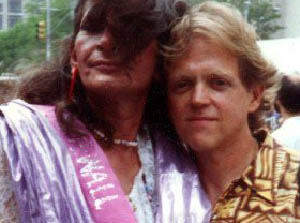
People of Color also braved being excluded by America’s budding LGBTQ community in the years immediately following Stonewall, reveals “Stonewall Forever,” a short documentary about June 28, 1969. A heart-wrenching excerpt from the documentary shows Rivera four years after Stonewall, being booed by a primarily white crowd, as she challenges the crowd’s apathy about the ongoing jailing of transgender or gender non-conforming people in New York City.
Whatever the LGBTQ community has experienced, we didn’t learn enough from it to prevent our BIPOC brothers and sisters from still being and feeling excluded, often. Time to change.
(3) LESBIANS
Common lore says Johnson “threw the first brick.” But Johnson herself has actually stated she arrived to Stonewall at about 2 a.m. “after the place was already on fire.” To more fully understand Stonewall, I watched, “Stonewall Uprising: An American Perspective” by PBS, an exhaustive 2011 documentary featuring eyewitness accounts.
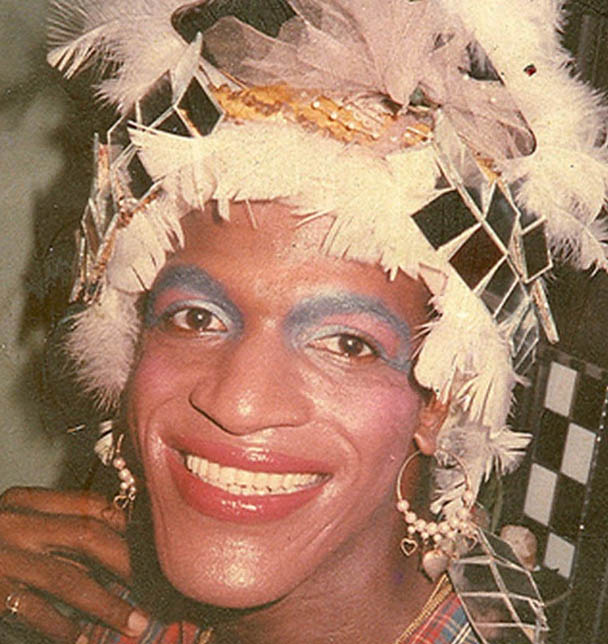
One witness in the film describes a “rather tough lesbian” being among the first to be roughed up by police. “The harder she fought, the more the cops were beating her up and the madder the crowd got.” We now know this was Storme DeLarvarie, who is also rumored to have shouted to the crowd as she was tossed into the paddy wagon, “Aren’t you going to do something?” The rest is history.
In the five days following June 28, when the clashes with police grew increasingly violent, lesbians stepped forth to help organize those clashes into marches and events. What started as a post-Stonewall gathering of “400 guys and a few women,” said one early founding lesbian, became a gender-inclusive community, because lesbians showed up and stuck around, helping to connect with the surrounding business community, distribute fliers and mobilize.
Next year, let’s hope we see more “thank Storme” memes floating around along with Marsha and Sylvia.
(4) MINOR LEAGUE BASEBALL
Pride night at the ballpark is among the latest, greatest Pride trends! It’s been around for years — and yet is still growing. It seemed this year that every time I put one Pride Night at the ballpark on the calendar, another one was announced. America’s greatest pastime is becoming part of the fabric of Pride month — a way for athletes, non-athletes, allies and LGBTQ people to join without judgment, or even talking to each other. It’s the perfect no-pressure environment to build LGBTQ affirmation into the fabric of society without anything other than the shared joy of baseball and ballpark food.
(5) PUBLIC LIBRARIES
This is another American institution that has proven essential in helping to “normalize” the celebration of Pride in recent years — and to new levels this year. Drag Storytime has now been joined by rainbow rinky-dinks and flag parties. This is all the more admirable considering just three short years ago, Drag Storytime, which first swept the nation in 2019, was a nationwide controversy with libraries facing boycotts and public criticisms. Libraries like Iowa City’s stuck with it despite the criticism. And now they’re doing even more, often wrapping the rainbow flag and colors into a full-out civics discussions or arts and crafts classes. It’s yet another welcome normalization of LGBTQ culture that will rightfully wrap us into the batter of Americana.
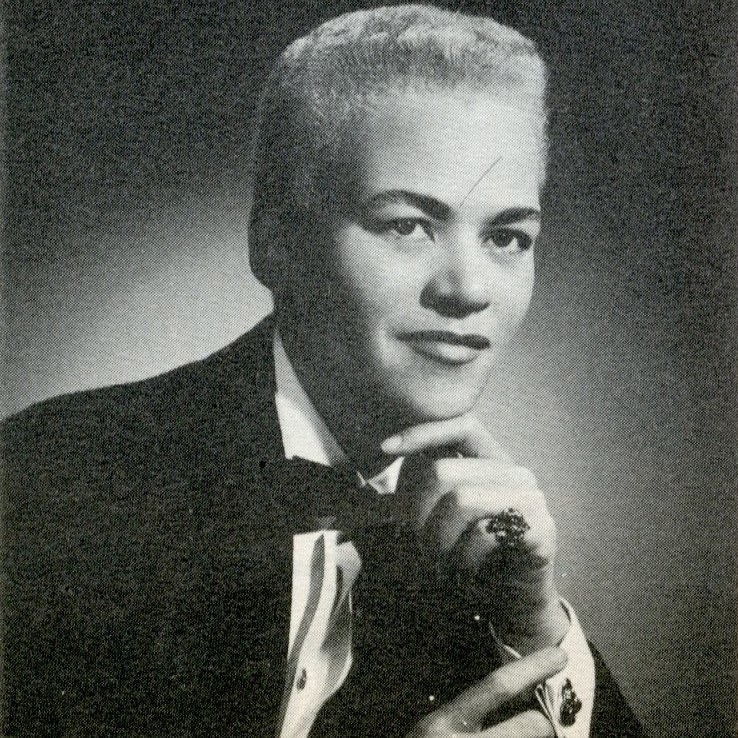
(6) PRIDE DRIVES
Thanks to the pandemic, riding around in pretty cars — a super-parade of sorts — is also part of the new ways to celebrate Pride. And why not? You can participate from your car (deck it out!). Or, you can participate from your yard (gay Christmas in June!). Or from your front porch, just to watch. Or, almost every pride drive also provides a live stream. Wherever you are, however out you are or not, cars and pride drives are the new fully-accessible way to be part of community. They will likely stick around long past the pandemic.
(7) THE WORD ‘UPRISING’
It’s been unfortunate to see this word so zealously chucked to the side, by media in 1969 and internet memes since, in favor of the word “riot.” Some Pride events also continue the loose wording, and it can cause friction among our fellow LGBTQ people and allies. For the record: actual witnesses and participants of Stonewall work hard to call it an “uprising.” Howard Smith, a reporter for the Village Voice at the time, has tried to make this point, calling LGBTQ people at the time “brutalized.”
The situation painted by eyewitnesses was one of direct confrontation between police and protesters, following a decades-long process of prejudice verging on the edge of extermination:
- Throwing of bricks and ramming of doors that night occurred only after police enacted violence directly on protesters — some of whom were dancing and singing — and then barricaded themselves inside of the very business they had JUST raided and emptied.
- The actual night of Stonewall only occurred after several days of escalated terrorism of the Stonewall Inn, including a raid two nights earlier.
- Those days of escalated terrorism came only after months of increased attacks on LGBTQ people because of a political campaign.
- Those months followed decades of increasing condemnation of LGBTQ people, who had no legal standing of any kind and were the target of government-funded anti-gay campaigns that encouraged people to be suspicious of each other. Electro-shock therapy, lobotomies, injection of dangerous drugs (including one that simulated waterboarding) were all considered acceptable responses to being a known homosexual, documents “Stonewall Uprising.” Even Mike Wallace hosted several specials on CBS designed to scare society away from homosexuals. Stonewall was an uprising against decades of abuse and exclusion from every front of society, though it may have involved a form of rioting. It was much more than that.
(8) SACRIFICE
On most nights in the late 1960s, witnesses said, Stonewall was the hang-out for a mostly male, “have nothing to lose crowd.” Homeless teens, substance users and yes, drag queens who had nowhere else to go. Gays with middle- to upper-class jobs, and those who were married and only secretly homosexuals, tended to choose other bars, PBS reports.
But the evening of Stonewall, all kinds of gays are reported to have joined the standoff. So did Black Panthers and people of every ethnicity, witnesses report. On the evening of Stonewall, protesters sacrificed their personal safety, receiving head wounds for days on end from police batons. In the weeks and years after, business owners continued to sacrificed their reputations and some customers. They braved condemnation they had feared before.
In the embedded documentary below, we learn how the sense of sacrifice continued 23 years after Stonewall, in 1992, when it still was considered risky to attend a Pride celebration. In “The Words Matter,” Michael Chanak documents the years and years of sacrifice he and other Procter & Gamble employees endured just to get the words “sexual orientation” added to the company’s EEOC policy in 1992. Though we now have Pride celebrations popping up in small communities everywhere, many LGBTQ people in those communities still risk losing support and even safety. Let’s not forget their sacrifice.
(9) ELDERS
Too often today, I see mostly millennials dismissing their elders. “Ok, Grandpa,” is right up there with, “Right, Karen!” as the popular diss from woke young adults to those they perceive of as outdated or over-privileged. The same folks that mistakenly claim “Pride was a riot!” are often the same ones lecturing their elders.
On one hand, you can’t blame the millennials. We “elders” (yeah, I’d barely qualify as one) often comment on the millennials’ sometimes puzzling life ethics. But the burst of LGBTQ+ archiving projects this year is testament to why we should honor our elders. This is all especially true today: did you know that technology has advanced at the pace of five years in just the last 12 months? Information and history have also advanced THAT quickly. So much more to record, so much more to remember, so many lessons to learn, and so much more context only available from those who lived it: our elders. Time to make dropping subtle ageism a priority in our LGBTQ communities.
(10) ALLIES
In cities like Buffalo Grove, Ill., allies are THE spearheads of Pride activism. Carolyn Heyman Pinta leads an annual Pride Drive that rivals any parade in color, messaging, diversity, corporate support, community involvement … all the good things. Cedar Rapids, Iowa, has a history of allied leadership on its Pridefest Board. And in Humboldt, Iowa, where I had the honor of being a guest speaker at their second annual Pride event Friday, allies accounted for most of the audience members. The organizer, John Gause, even joked about whether an actual LGBTQ person would win any of the two dozen door prizes! Everywhere, allies are the ones mostly staffing the libraries and ballparks and other event venues that are hosting these Pride events. We don’t just need allies; they are central to the LGBTQ cause.
(11) AND FINALLY, DRAG PERFORMERS
I will be the first to say, wow, there are a LOT of drag activities this year. Drag queens are splashed all over my consciousness, showing up in my dreams, flashing through my head spontaneously, with their blasts of neon-colored make-up and sky-high hair and lashes as dark as tarantulas and sneering eyes and mouths. It’ll be months before my mind replaces these endless images with more mainstream representations of LGBTQ culture. And to a greater ratio than ever before, drag queens this year far outnumber drag kings.
Nevertheless, having seen what a drag queen goes through to prepare for those three or four minutes on-stage, we cannot thank them enough for the work they invest for us, especially during Pride month. The performance itself is only part of it: prep time takes hours. Shopping takes more hours. Designing the whole creation — apparel, make-up song, movement — is a never-ending affair, as all creative people know.
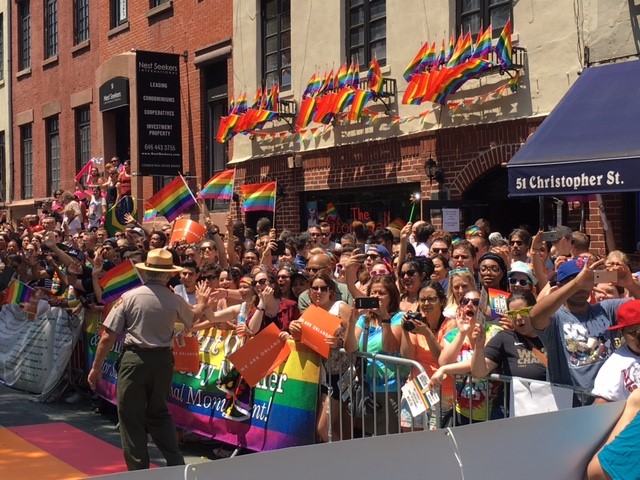
And today, drag queens have to be “with it.” I don’t even know if an old-time Reba McIntire or Dolly Parton impersonator would have a chance in hell to stand out from the crowd. Candi Stratton has somehow managed to keep her Cher impersonations fresh and contemporary, but only, it appears by representing all the Chers over the decades — and there are a lot.
Not to mention, so many of our drag performers are People of Color, already facing the challenges of being BIPOC — including being unable to come out fully to their families — and YET devoting their best creative instincts to keep us constantly visually stimulated. We can never, ever thank our drag queens enough and encourage all efforts to support their well-being and fair pay.
In closing, later this week, you’ll see some photo exhibits of Pride celebrations across these two “fly-over states.” Most will be from small communities that are only now reaching the point where their high school Gay Straight Student Alliance is officially embraced, or where an LGBTQ person can safely and openly share their identity.
We’re definitely not out of it yet. The work remains, and it’s harder than ever, with backlash against LGBTQ rights growing anew. We also have growing strife within our LGBTQ communities to sort out; the tension between lesbian feminists and transgender people is escalating, and the former trend of lumping transgender people in with the nonbinary is also disintegrating as we learn more about each other.
We can’t all yet agree on how long our acronym will grow (are we really ready for LGBTQIPAA+?), or how many flags are enough. And many BIPOC people still feel alienated by the LGBTQ community’s emphasis on “blond-haired blue-eyed” archetypes.
But don’t let the “one step back” overshadow the “two steps forward.” I am someone who remembers when Pride celebrations happened out of necessity in wooded parks or the parking lots of churches. What’s happening this year is amazing: whether or not the gay Pride flag goes up City Hall’s flagpole isn’t nearly as important as the fight to try and get it there.
We’re headed somewhere. It might not be as fast, or as perfect, as we might want. But we’re getting there. “There’s a saying in the Bible about having the faith of a mustard seed,” says Chanak. “Well, that’s my mustard seed. It WILL change.”
(cover photo by Elvert Barnes, Flickr)

